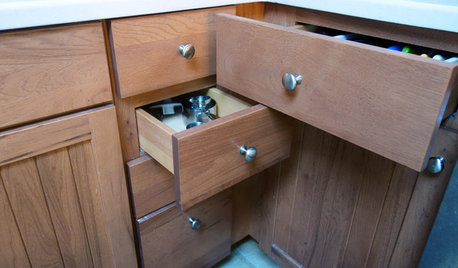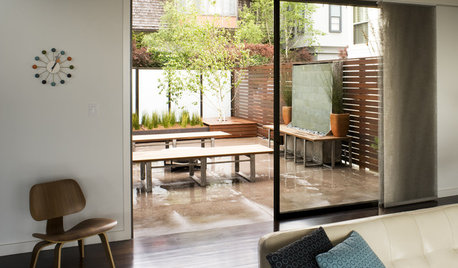mold madness
vsayre
18 years ago
Related Stories

KITCHEN OF THE WEEKKitchen of the Week: Fans of Traditional Style Go For a ‘Mad Men’ Look
The TV show inspires a couple to turn their back on the style they knew and embrace a more fun and funkier vibe in their kitchen
Full Story
DECORATING GUIDES'Mad Men' Trend: Retro Metal Wall Sculptures
Bravura metal artwork brought depth and shine to walls in the 1960s, and it's brightening homes again today
Full Story
MOST POPULARWhy We Love Midcentury Modern Design
There's a method to all this 'Mad Men'-ness — just look to psychology, tough times and, believe it or not, Apple
Full Story
FUN HOUZZ10 Truly Irritating Things Your Partner Does in the Kitchen
Dirty dishes, food scraps in the sink — will the madness ever stop?
Full Story
Modern Icons: George Nelson Clocks
Nelson's Clocks Delight, Add Mad Mid-Century Style — and Tell Time, Too
Full Story
HOMES AROUND THE WORLDHouzz Tour: A Shoreline Home Glows Like a Lantern
This sailing-mad family’s house in New Zealand, inspired by traditional boat sheds, responds to light and wind
Full Story
Coed-Cave: A Man Cave for the Masses
Enjoy March Madness Surrounded by Color, Art, Light — Even Flowers!
Full Story
HEALTHY HOMEWhat You Need to Know About Dust and How to Fight It
Breathe easier with these 10 tips for busting mites, dander and other microscopic undesirables
Full Story
PAINTINGKnotty to Nice: Painted Wood Paneling Lightens a Room's Look
Children ran from the scary dark walls in this spare room, but white paint and new flooring put fears and style travesties to rest
Full Story






jazzbone
Buddyfly
Related Professionals
Carlisle Landscape Architects & Landscape Designers · Ashland Landscape Architects & Landscape Designers · Hershey Landscape Architects & Landscape Designers · Piqua Landscape Architects & Landscape Designers · White Oak Landscape Architects & Landscape Designers · Wakefield Landscape Contractors · Annandale Landscape Contractors · Cicero Landscape Contractors · El Segundo Landscape Contractors · Fairview Landscape Contractors · Fuquay-Varina Landscape Contractors · Hampton Bays Landscape Contractors · Pahrump Landscape Contractors · San Benito Landscape Contractors · Eastlake Landscape ContractorsvsayreOriginal Author
buckyforce
Buddyfly
rockhewer
vsayreOriginal Author
Fleur
Fleur
Buddyfly
buckyforce
Buddyfly
jazzbone
Fleur
GardenChicken
Buddyfly
Fleur
Buddyfly
Buddyfly
scooterbug
vsayreOriginal Author
vsayreOriginal Author
jazzbone
Buddyfly